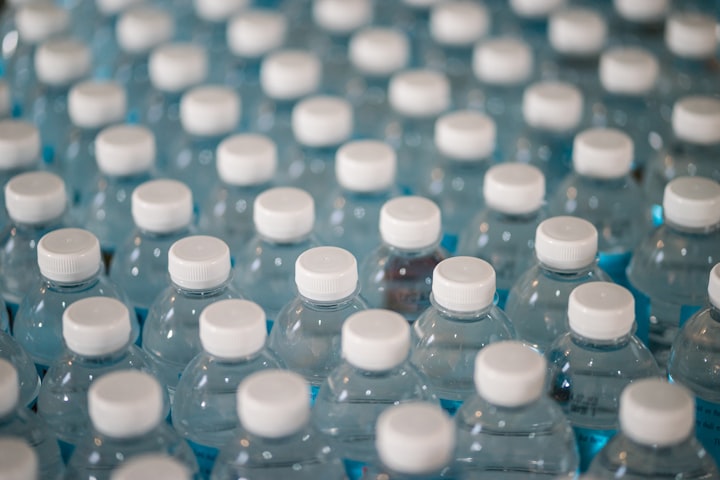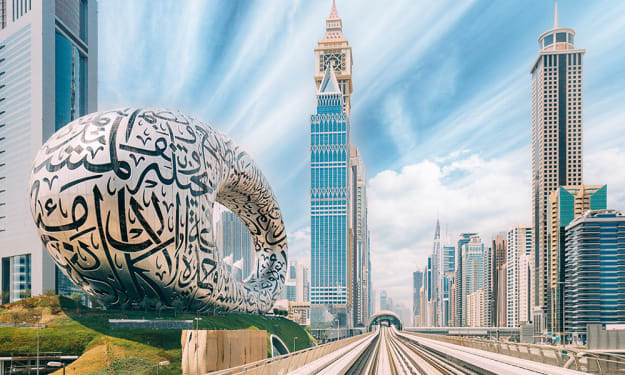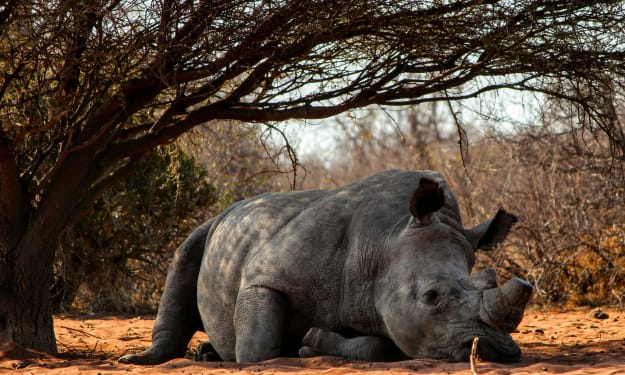The Continual Process of Reducing
Sustainability is a journey. Here are some steps I've taken on mine.

It started with recycling.
I remember when I was a kid and our our neighborhood began its recycling program. Only plastic types 1 and 2 could be put into the bins, so we dutifully checked the symbols, rinsed out our Diet Coke bottles, and felt like the greenest family this side of the Mississippi.
My mom became well known for bringing bags into her office and to my cross country meets. She would pick up bottles and intercept people who were about to throw their recyclable items into the trash can.
"Here, let me recycle that for you," she would say, holding out her big bag with an even bigger smile. It frustrated her that people wouldn't take one extra second to decide not to throw something away if it could be recycled.
Our understanding of sustainability has come a long way since I was growing up. We now know that most items that people think can be recycled actually can't, and our focus has rightly shifted to reusing, reducing, or refusing in the first place.
Still, the model presented to me as a child for more sustainable practice has stuck with me, and it continues to impact my journey towards a lower-use, "eco-friendly" life.

Growing towards Reducing
I thought I was a pretty "sustainable" person before I moved to Arizona for grad school. I recycled. I walked to campus in college. I didn't think that I used more than I needed.
But one of my roommates in Flagstaff was about to rock my world.
She was next level. I've never seen anyone use less of a fraction of a paper towel at once, if she even used a paper towel in the first place. She would walk behind everyone in the house and turn off their lights if they exited the room for more than a minute.
She would put off turning on the thermostat for as long as humanly possible when November rolled around. Air conditioning wasn't even a concern to start with, because we didn't have it. Not in Flagstaff, where summers were mostly pleasant and the winters were cold and sharp.
She didn't have a car. She biked everywhere, no matter how much ice or snow was on the ground. She grew up in Alaska, and she was used to much more extreme conditions.
She didn't eat meat, unless she could verify that it came from "happy cows" raised grass-fed or "happy chickens," raised free range. Usually, if she ate meat, it was from a local source. She had friends who gave her salmon and other friends with whom she foraged lobster mushrooms.
She didn't use the dryer. She didn't do laundry until she absolutely had to. When she turned on the water in the sink, she barely set it to more than a drip, and only for a couple of seconds. She washed out and reused zip-top plastic bags over and over and over again.
I was astonished. You can't live around someone like that and not have them rub off on you at one point or another. Between my mom's legendary recycling and my roommate's incredible low-impact lifestyle, I started considering what I could do in my own life to reduce my carbon footprint, save the oceans, and lead a more sustainable life.

Change is a Process
Over time, I have begun to implement little changes here and there to reduce my impact on the environment. My understanding of what is a sustainable choice evolves every day, as I learn more about waste and ways to reduce it.
Here are a few changes that I have made in my life to have less of an impact:
1. Plastic
Eight million metric tons of plastic are dumped into the ocean every year, according to a 2015 study in Science. By now, the number is probably even higher.
Considering that plastic, especially single-use plastic, accounts for a majority of the waste in our oceans, this is the area that I have tried to pay the most attention to.
- I now very rarely use single-use plastic zip-top bags. Instead, I use reusable silicone bags or reusable storage containers for everything from hiking snacks to sandwiches to leftovers.
- Instead of plastic wrap, I use beeswax fabric wraps. These don't last quite as long as the silicone bags, but they are very handy for covering bowls or wrapping up half an avocado.
- When I do use a plastic bag, I try to reuse it at least three times, washing it out between each use.
- When I buy fresh fruits and veggies at the grocery store, I don't use plastic produce bags. Instead, I either put the items right in the cart, or I use reusable mesh bags.
- I use refillable hand soap and dish soap rather than using soap that comes in plastic packaging.
- If an item I want comes in a plastic bag or box, I try to see if there is an alternative, or I check to make sure that it's the type of plastic that is recycled in my area. If there isn't an alternative and I really need the item, I'll probably buy it anyway—but it never hurts to check.
2. Fuel Use and Alternative Transportation
This is an area I could definitely improve on.
When I lived in Flagstaff, it was easy to get around without a car, since everything was so close together. In Ohio, it's a little harder. Still, there are a few changes I've been able to make here.
- Luckily, I live pretty close to a grocery store, a post office, several parks, and many tasty restaurants. When I only have to buy a few things at the store, I walk instead of driving. It helps me get my steps in, and it's a great way to break up the monotony of online teaching!
- I wait to run errands until I can group them together by location and only make one trip.
- If I'm going on a hike with a friend, we will carpool instead of meeting there, even if it's a little inconvenient with our schedules.
3. Paper and Water
I could also improve here, but I have reduced in both of these areas.
- I use paper towels sparingly. When I do use them, I save them for things like olive oil spills or wiping out a pan before cooking a next ingredient.
- Instead of paper napkins, I use washable cloth napkins.
- I don't always take a shower every day, and especially in the summer, I try to keep them fairly short (I do not always succeed at this).
- I don't do laundry unless I have a full load, and I wear my clothes many, many times before I wash them (even running clothes. It gets a lil' stinky.)
4. Diet
The meat industry is one of the worst culprits in climate change, including the pollution of our waters. I've known this for years, but still struggle to cut meat out completely from my diet.
I've had many flings and flirtations with vegetarianism over the last few years. Though I'm still not fully vegetarian, I've come a long way in reducing my meat intake.
- I like to call myself an "opportunistic vegetarian." I don't buy meat at the grocery store and I don't cook with it, but I will eat meat if I am visiting a friend or eating dinner at someone else's house.
- Instead of "Meatless Mondays," I've thought about only eating meat one day a week, perhaps "Meatful Mondays." I find that I feel weaker and more tired while running during the periods when I'm not eating meat at all, so for the time being, I'm focusing on reduction rather than completely cutting it out.
- I will order meat at a restaurant, but only sparingly, on special occasions, or when it is indicated as coming from an organic and/or ethically raised source.
I like the idea of being a full vegetarian, and I might accomplish this some day. For now, I'm going to continue focusing on ways to cut down my meat consumption and incorporate plant-based food as much as possible.

The Journey Continues
My experience has shown me that little changes, added up over time, can make a big difference. Sustainability is only sustainable if we take manageable, realistic steps and keep building on them.
If you want to make drastic changes, like going vegetarian or cutting out single-use plastic completely, that's amazing, and you should totally go for it! But it is perhaps more realistic in the long run to replace little daily habits with more sustainable ones. By doing this, we can keep building on our knowledge and reducing our impact on the environment as we go.
These are just some of the changes I've made so far. I'll continue to make more in this journey, and I hope you do too.
About the Creator
Sarahmarie Specht-Bird
A writer, teacher, traveler, and long-distance hiker in pursuit of a life that blends them all. Read trail dispatches and adventure stories at my website.
Enjoyed the story? Support the Creator.
Subscribe for free to receive all their stories in your feed. You could also pledge your support or give them a one-off tip, letting them know you appreciate their work.






Comments
There are no comments for this story
Be the first to respond and start the conversation.